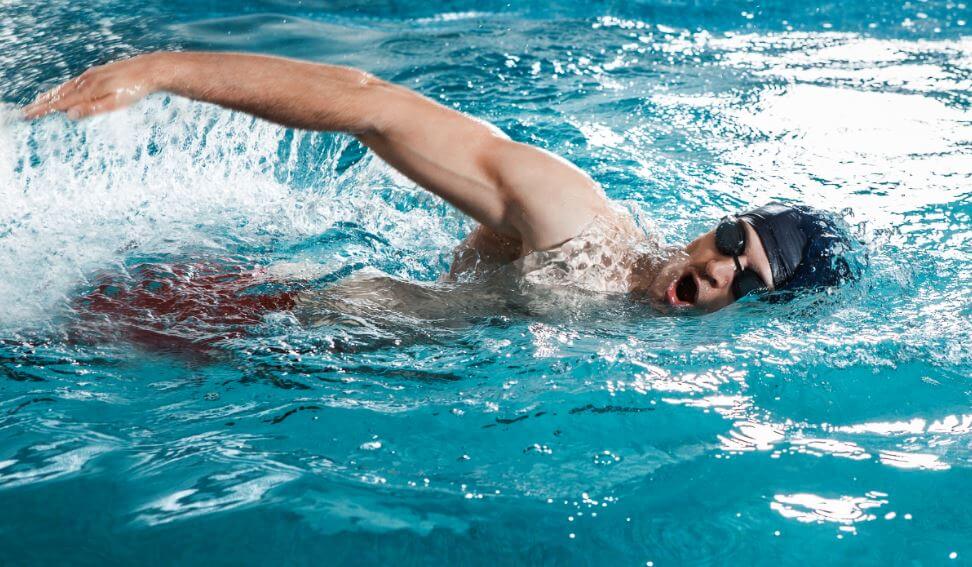Benefits of Individual Sports

Even though team sports have great benefits on a physical and social level, many people still prefer training on their own. Does this mean they’ll be missing out? Of course not! There are many benefits to individual sports, and today we’ll cover most of them.
Although by practicing individual sports you might be losing out on team building and communication, there are also many benefits!
Individual or team sports?
Choosing whether you want to try your hand at an individual or team sport can be complicated. Of course, your final decision will depend on your personality, interests, and lifestyle.
One of the greater benefits of participating in a sports team is learning to collaborate and work with different people. Nevertheless, individual players have the advantage of progressing at their own pace and competing against themselves.
Whether you choose one or the other, rest assured that any physical activity will develop your skills, help you feel good in your own body and improve your mental and physical condition.
What are the benefits of individual sports?
As with any sport, individual sports have many benefits. If you’re still on the fence, here are some of the benefits:
1. Improved confidence
Winning at an individual sport brings on a strong sense of satisfaction. How could this not be the case, if it was your very own effort that made it all possible? Because of that, individual sports can increase self-confidence on all levels. For athletes, this also leads to better performance and skill development.

2. Boosts motivation
Because much of the success in individual sports depends on the motivation of the athlete, these disciplines tend to stimulate mental strength. When training and competing on their own, athletes have to show greater resilience.
This also means learning to motivate yourself, even when you aren’t feeling like it! Whether that’s completing challenging training sessions or pushing yourself in competitions, individual sports will boost your ability to manage yourself.
After all, there’s no one else to blame after a bad day, so athletes learn to deal with bad results. In individual sports, there are no partners to please or pressure, since the pressure comes from within.
In short, intrinsic motivation literally means that desire comes from within. This is a trait that many athletes who practice individual sports possess.
3. Beating personal goals
Individual sports also allow athletes to aim for personal goals without worrying about the team. In fact, it’s often said that individual athletes compete against themselves. This means they have competitors to beat, but they also try to improve their own records and their best previous performances.
4. Foster responsibility
In individual disciplines, the success of athletes depends entirely on their own efforts. This means that if you want to win, you cannot have the worst game of your life and rely on the good performance of a teammate to improve the game.
These sports teach individuals that only they are responsible for their actions.

When they lose a match, athletes competing on their own cannot blame anyone for their failures. This teaches them to be responsible for their own actions and decisions. No one but them can do the job; If they want to achieve good results, effort and dedication are the only ways to achieve it.
Simply put, individual sports have many benefits. If you’d rather train by yourself, it’s a great option that will improve your confidence, increase your sense of responsibility and boost your motivation ability.
The choice depends on the athlete, the personality and the objectives of the sport. Go break your own limits!
Even though team sports have great benefits on a physical and social level, many people still prefer training on their own. Does this mean they’ll be missing out? Of course not! There are many benefits to individual sports, and today we’ll cover most of them.
Although by practicing individual sports you might be losing out on team building and communication, there are also many benefits!
Individual or team sports?
Choosing whether you want to try your hand at an individual or team sport can be complicated. Of course, your final decision will depend on your personality, interests, and lifestyle.
One of the greater benefits of participating in a sports team is learning to collaborate and work with different people. Nevertheless, individual players have the advantage of progressing at their own pace and competing against themselves.
Whether you choose one or the other, rest assured that any physical activity will develop your skills, help you feel good in your own body and improve your mental and physical condition.
What are the benefits of individual sports?
As with any sport, individual sports have many benefits. If you’re still on the fence, here are some of the benefits:
1. Improved confidence
Winning at an individual sport brings on a strong sense of satisfaction. How could this not be the case, if it was your very own effort that made it all possible? Because of that, individual sports can increase self-confidence on all levels. For athletes, this also leads to better performance and skill development.

2. Boosts motivation
Because much of the success in individual sports depends on the motivation of the athlete, these disciplines tend to stimulate mental strength. When training and competing on their own, athletes have to show greater resilience.
This also means learning to motivate yourself, even when you aren’t feeling like it! Whether that’s completing challenging training sessions or pushing yourself in competitions, individual sports will boost your ability to manage yourself.
After all, there’s no one else to blame after a bad day, so athletes learn to deal with bad results. In individual sports, there are no partners to please or pressure, since the pressure comes from within.
In short, intrinsic motivation literally means that desire comes from within. This is a trait that many athletes who practice individual sports possess.
3. Beating personal goals
Individual sports also allow athletes to aim for personal goals without worrying about the team. In fact, it’s often said that individual athletes compete against themselves. This means they have competitors to beat, but they also try to improve their own records and their best previous performances.
4. Foster responsibility
In individual disciplines, the success of athletes depends entirely on their own efforts. This means that if you want to win, you cannot have the worst game of your life and rely on the good performance of a teammate to improve the game.
These sports teach individuals that only they are responsible for their actions.

When they lose a match, athletes competing on their own cannot blame anyone for their failures. This teaches them to be responsible for their own actions and decisions. No one but them can do the job; If they want to achieve good results, effort and dedication are the only ways to achieve it.
Simply put, individual sports have many benefits. If you’d rather train by yourself, it’s a great option that will improve your confidence, increase your sense of responsibility and boost your motivation ability.
The choice depends on the athlete, the personality and the objectives of the sport. Go break your own limits!
All cited sources were thoroughly reviewed by our team to ensure their quality, reliability, currency, and validity. The bibliography of this article was considered reliable and of academic or scientific accuracy.
- Rasciute, S., & Downward, P. (2010). Health or happiness? what is the impact of physical activity on the individual? Kyklos, 63(2), 256–270. https://doi.org/10.1111/j.1467-6435.2010.00472.x
- Stellingwerff, T., Maughan, R. J., & Burke, L. M. (2011). Nutrition for power sports: Middle-distance running, track cycling, rowing, canoeing/kayaking, and swimming. Journal of Sports Sciences, 29(SUPPL. 1). https://doi.org/10.1080/02640414.2011.589469
- Prieto Andreu, J. M. (2015). Variables deportivas y personales en la ocurrencia de lesiones deportivas. Diferencias entre deportes individuales y colectivos. Retos: Nuevas Tendencias En Educación Física, Deporte y Recreación, ISSN 1579-1726, No. 28, 2015, Págs. 21-25, (28), 21–25. Retrieved from https://dialnet.unirioja.es/servlet/articulo?codigo=5145818
- Theisen, D., Frisch, A., Malisoux, L., Urhausen, A., Croisier, J. L., & Seil, R. (2013). Injury risk is different in team and individual youth sport. Journal of Science and Medicine in Sport, 16(3), 200–204. https://doi.org/10.1016/j.jsams.2012.07.007
This text is provided for informational purposes only and does not replace consultation with a professional. If in doubt, consult your specialist.








